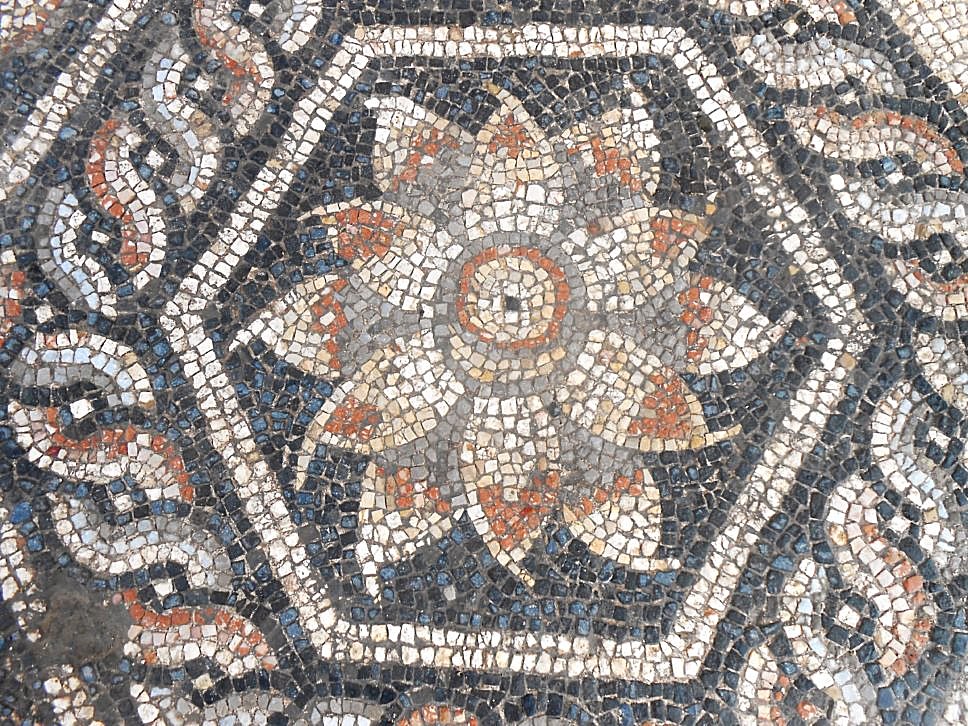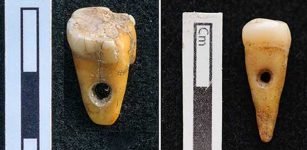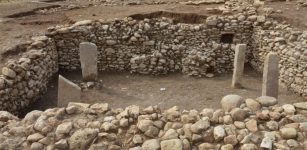Beautiful Mosaic Dated To Graeco-Roman Times Discovered In Alexandria, Egypt
Conny Waters - AncientPages.com - The ancient urban complex of Kom el-Dikka has been excavated by Poland’s Centre for Mediterranean Archaeology (CAS since 1960. Polish archaeologists work in cooperation with the Egyptian Ministry of Antiquities.
Kom el-Dikka is a neighborhood in Alexandria, Egypt. Now an important archaeological site, Kom Al Dikka was a well-off residential area in Graeco-Roman times, with impressive villas, bathhouses and a theatre.
 A mosaic from Alexandria. Image credit: Poland’s Centre for Mediterranean Archaeology (CAŚ)
A mosaic from Alexandria. Image credit: Poland’s Centre for Mediterranean Archaeology (CAŚ)
The site still have many artifacts that can be unearthed. Digging has uncovered successively a vast fragment of the Late Antique city (4th–7th centuries AD) including a small theatre, the grand Imperial bath and a unique group of twenty-two lecture halls – apparently the remains of an ancient “university”.
In recent years, excavation work concentrated on the study of the still mostly unknown residential architecture of Roman Alexandria (1st–3rd centuries AD).
A new mosaic was found in Alexandria by Polish archaeologists. Image credit: Poland’s Centre for Mediterranean Archaeology (CAŚ)
“The buildings of that period are known to have often been lavishly decorated – a rule that found confirmation in Alexandria this season: in one of such houses we have discovered a fine Roman floor mosaic” Dr. Grzegorz Majcherek, the director of the team of PCMA archaeologists working at the site, said in a press release from CAŚ.
 A new mosaic was found by a team of Polish archaeologists in Kom el-Dikka site in Alexandria. Image credit: Poland’s Centre for Mediterranean Archaeology (CAŚ)
A new mosaic was found by a team of Polish archaeologists in Kom el-Dikka site in Alexandria. Image credit: Poland’s Centre for Mediterranean Archaeology (CAŚ)
The main square field of this multi-colored pavement (measuring 2.60 by 2.60 m) is composed of six hexagonal panels featuring lotus flowers, framed by a circular guilloche pattern. Lotus buds can also be seen in spandrels. Overall, the design of the mosaic, additionally equipped with a transversal field in front decorated with astragals and rosettes, is typical for the triclinia – the most imposing of the dining rooms in a Roman house.
See also:
Extraordinary Ancient Mosaics, Crucifixes, And Long-Lost Church Discovered In The Holy Land
Beautiful Mosaics Reveals Ancient Secrets Of Unknown Roman City Ucetia In France
The composition, featuring a circle inscribed into a square, so exceptionally popular in Roman Egypt, is considered distinctive of Alexandrian style.
This latest discovery, coupled with other polychrome tessellated floors previously found at the Kom el-Dikka site and displayed in the mosaic shelter (“Villa of the Birds”), once again points not only to the affluence of the residents of these houses, but also to the popularity of mosaic art in Alexandria.
Written by Conny Waters - AncientPages.com Staff Writer





















